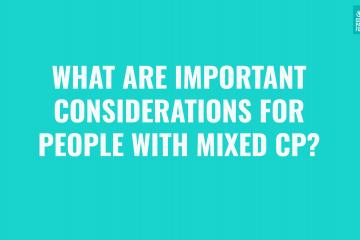What is Chorea?
Chorea is a movement disorder characterized by inability to sustain a posture with an overflow of additional movements that tend to have a twitchy quality, oftentimes moving from one joint to another.
It can get worse:
- During times of excitement
- Stress
- Activation of other muscles,
It can get better:
- During rest or sleep
Chorea in people with cerebral palsy is not very common. Spasticity and dystonia are definitely more common. However, it is oftentimes part of a bigger picture. When we do see it, it's very frequent in patients who have a lot of dystonia that they also have chorea.
There are many causes of chorea within individuals who have cerebral palsy. Often we see is that there's either an injury or some sort of dysfunction that's going on in the deep movement centers of the brain called the basal ganglia. This is part of the brain that helps regulate the movements that you do or don't make without even thinking about it. When there's dysfunction there, it oftentimes presents as either chorea or other types of extra movements.
There isn't a specific test to help us diagnose chorea. It's a clinical observation that's based on what we see, as well as what the patient is able to describe in terms of their experience. There are also scales that we can use to measure chorea. In the end, it's really the eye of the observer that's important. So it's really important to have somebody who's familiar with chorea is to be able to recognize and differentiate it from other movement disorders and also to help guide treatment.
There are a lot of options for treatment for chorea. One of the important questions to ask before we decide on any treatment is how is this affecting the individual? If it's not bothering them, we may not need to do anything for treatment. Sometimes treating anxiety or pain can in and of itself help with the chorea, but if needed, there are a lot of different medications that can be tried.
Chorea is a movement disorder characterized by inability to sustain a posture with an overflow of additional movements that tend to have a twitchy quality, oftentimes moving from one joint to another.





